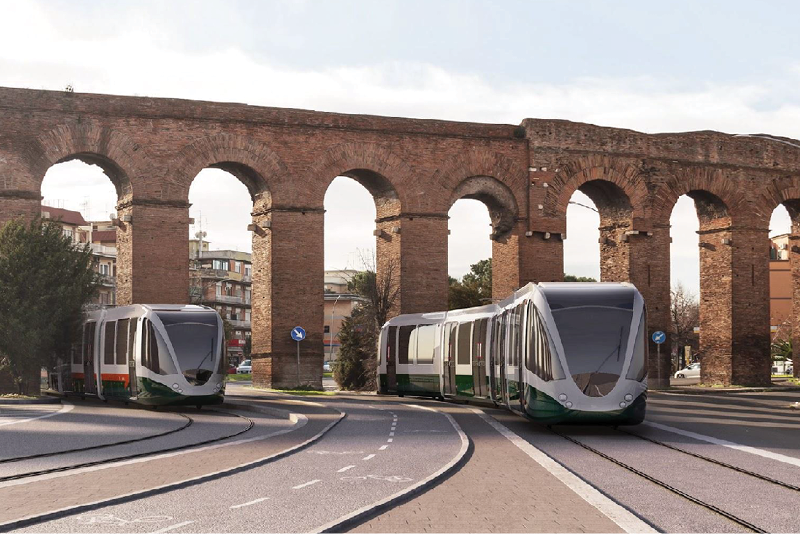Rome pushes forward with tramway expansion
Posted on 6th March 2023 at 11:36
Technical and economic studies for Rome’s Termini – Vaticano – Aurelio tramway have been approved, with tenders for design and construction of the 8.3km (5.2-mile) route expected to be issued shortly.
Conceived in the 1990s, the project has been revived with route modifications for inclusion in the Italian capital's Urban Plan for Sustainable Mobility. The connection to the western suburbs is to be completed for 2025.
Works will be divided into two phases, with a common section from Termini to the confluence of Corso Vittorio and Lungotevere. A fleet of 22 new trams will be required to transport an expected 90 000 passengers/day, at peak headways of three minutes.
Tenders are also expected for the city’s three other concurrent tram projects, Togliatti, Verano – Tiburtina and Giardinetti – Tor Vergata, in the coming years.
The Togliatti project involves an 8km (five-mile) east-west line with 21 stops. Starting from Ponte Mammolo (interchange with metro line B), it will head west through the Centocelle junction (line C) to a new terminus at Subaugusta (line A).
Municipal authority Roma Servizi per la Mobilità is working on studies for this EUR184m project, with designs to be completed by September 2024 and contract awards by the end of that year. Once open it will offer a four-minute peak frequency to cater for 3500 passengers/hour/direction.
The Verano – Tiburtina project envisages a 1.3km (0.8-mile) extension with four stops, branching off the existing 3L at the Piazzale del Verano junction with viale Regina Elena and heading west along via Tiburtina.

An artist's impression of the future Togliatti tramway. Roma Servizi per la Mobilitatà
The Giardinetti – Tor Vergata scheme involves rebuilding and extending the 950mm-gauge Laziali – Giardinetti railway to create a 9.4km (5.8-mile) tramway with 3.6km (2.2 miles) of new street tracks and eight new stops.
The capital has 11 new tramlines in various stages of development, which if completed by 2030 as planned, would take the network to over 100km (62 miles).
In preparation for the expansion, and to replace the Stanga-built trams, the first of which arrived in 1947, in January the first tenders were released for up to 121 new double-ended low-floor tramsunder a six-year framework.
Worth up to EUR458m, the framework’s specification calls for 30-35m trams with onboard energy storage for OLE-free operation. To be delivered in three tranches, the initial contract is worth a reported EUR154.5m and would see 40 trams delivered to operator ATAC, the first within 22 months.
Tagged as: Roma, Rome, Togliatti, Tramway
Share this post:
